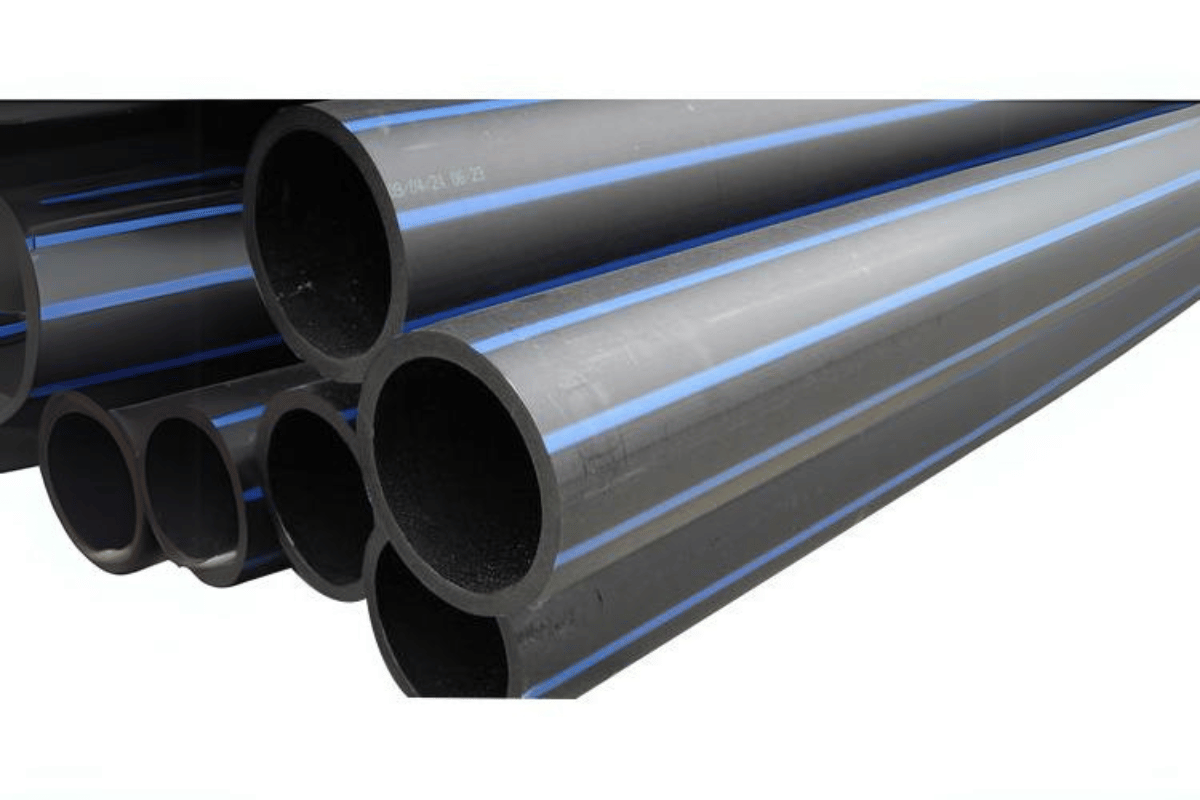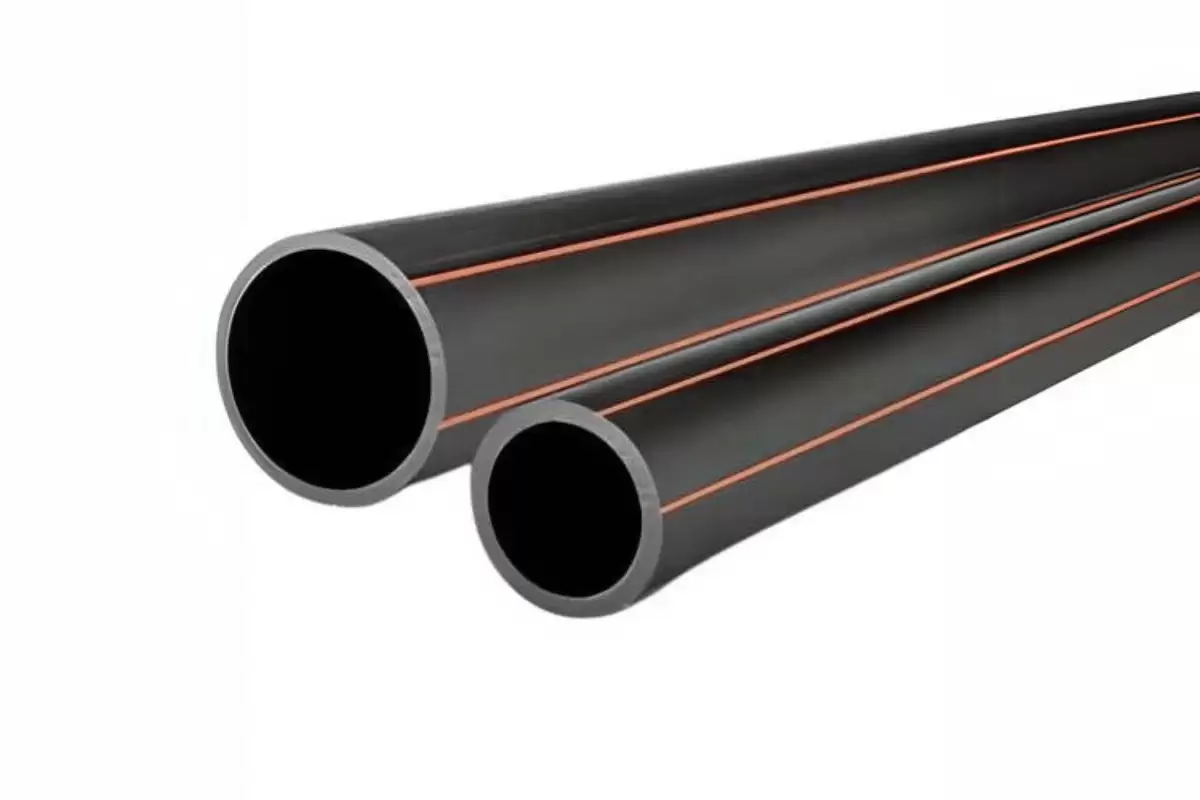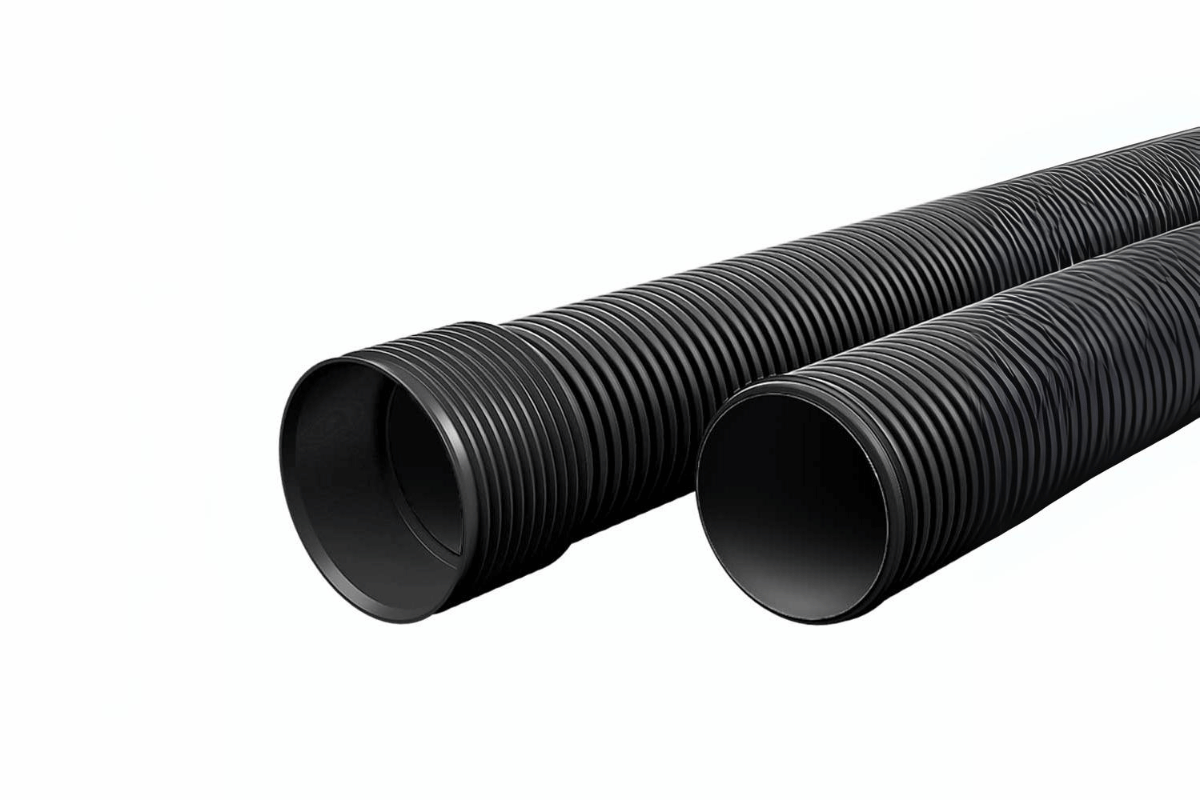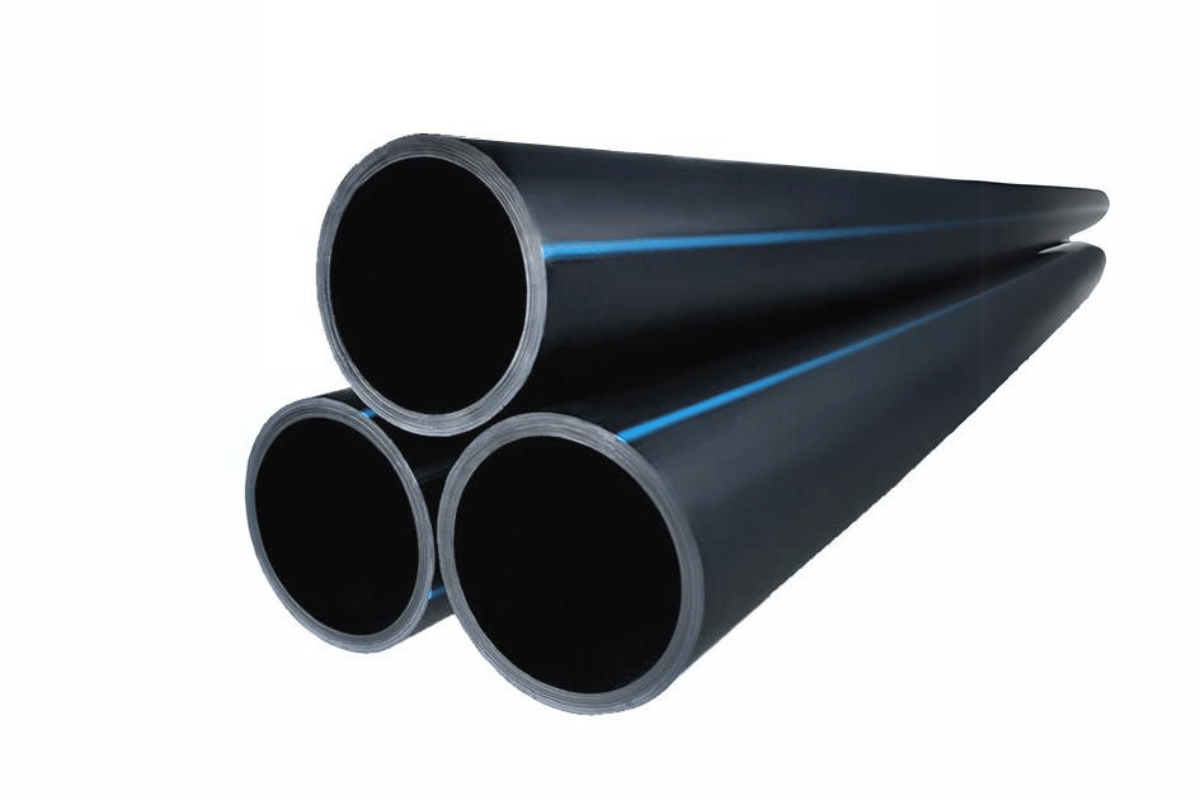High-density polyethylene (HDPE) pipes have become essential in many industries due to their durability, flexibility, and cost-effectiveness. The 2-inch HDPE pipe, in particular, is frequently used for water distribution, sewage systems, and agricultural applications. This article will delve into the various aspects that make 2-inch HDPE pipes popular, from their unique material properties and versatility to installation techniques and maintenance considerations. Understanding these characteristics will help you make informed decisions when selecting the proper piping solutions for your needs. Whether planning a new project or looking to upgrade existing infrastructure, this comprehensive guide aims to equip you with the necessary knowledge about 2-inch HDPE pipes.
What Are the Features of HDPE Pipe?
2 inch hdpe pipe
High-density polyethylene (HDPE) pipes are praised for their robustness, corrosion resistance, and flexibility, contributing to their long lifespan of over 50 years. One of the standout features of HDPE pipes is their versatility; they can be used in various applications, from water supply and gas distribution to sewer systems and industrial piping. HDPE pipes are also known for their leak-free joints, as the pipes are joined through heat fusion, creating a continuous system that minimizes the risk of leakages. Additionally, they perform well in harsh environments, with the ability to withstand extreme temperatures and pressures while remaining resistant to chemical abrasion. These qualities make HDPE pipes an economical and reliable option for urban and rural settings.
Advantages of High-Density Polyethylene
High-density polyethylene (HDPE) pipes offer several advantages, making them a popular choice in various industries. Based on information sourced from authoritative websites, here are the top three benefits:
- Durability and Longevity: HDPE pipes are known for their exceptional durability. According to industry standards, they have a lifespan of over 50 years, owing to their resistance to environmental stressors such as ultraviolet radiation, corrosion, and abrasions. This ensures they remain reliable over extended periods, reducing the frequency and cost of replacements or repairs.
- Flexibility and Impact Resistance: HDPE piping’s flexibility allows it to absorb shock and resist impact, which is beneficial in areas prone to ground movement or seismic activity. HDPE can bend without breaking, reducing the need for multiple fittings and joints. This ability to maintain flexibility while maintaining structural integrity is a crucial advantage, especially in diverse geographical conditions.
- Chemical Resistance and Leak Prevention: HDPE is resilient to a wide range of chemicals, making it suitable for transporting water, chemicals, and industrial effluents. The heat-fused joints in HDPE piping create a monolithic system that significantly reduces the risk of leaks. Compared to traditional materials, this method enhances the reliability of the pipeline, ensuring fluid delivery systems are efficient and secure.
Technical parameters, including specifications from the Plastic Pipe Institute and other organizations, indicate that HDPE pipes can handle pressures ranging from 30 to 345 bar (depending on the material grade and size). These attributes make HDPE a justified choice for demanding applications requiring high reliability and performance.
Why Choose IPS SDR11 PE4710 Black HDPE?
When considering piping solutions, IPS SDR11 PE4710 Black HDPE stands out as an optimal choice due to its impressive durability and versatility, which are highlighted prominently among leading providers. According to the top websites, this HDPE variant is praised for resisting environmental stressors, including UV rays and chemical exposure. It boasts a long lifespan, often exceeding 50 years, and offers remarkable flexibility and impact resistance, crucial for areas subject to ground movement. The material’s robust chemical resistance ensures leak prevention and integrity over time, supported by heat-fused joints that form a monolithic system. IPS SDR11 PE4710 Black HDPE can technically accommodate high-pressure requirements, typically managing pressures up to 160 psi and even higher sometimes, further solidifying its reputation as a reliable and efficient choice for various demanding applications.
Applications in Potable Water Systems
IPS SDR11 PE4710 Black HDPE pipes are increasingly utilized in potable water systems due to their exceptional properties and compliance with industry standards. The top websites highlight several reasons for their suitability in these systems:
- Longevity and Durability: These pipes have a lifespan of over 50 years, mainly due to their resistance to corrosion and environmental stressors such as UV rays and chemicals. This makes them an ideal long-term investment for water distribution networks.
- Safety and Compliance: PE4710 Black HDPE qualifies for potable water systems through various certifications, ensuring they meet regulatory bodies’ health and safety criteria.
- Pressure Ratings and Technical Parameters:
- Pressure Capacity: They are typically rated for pressures up to 160 psi, suitable for most municipal water systems.
- Standards and Specifications: These pipes adhere to specifications outlined by the AWWA (American Water Works Association) and NSF (National Sanitation Foundation) standards, ensuring their safe use in delivering potable water.
- Installation and Maintenance: HDPE pipes’ flexibility and impact resistance simplify installation processes and reduce maintenance needs. Heat-fused joints contribute to a leak-free and reliable pipeline system, enhancing the overall integrity of potable water infrastructure.
These attributes, consistently praised by leading industry sources, emphasize the practicality and efficiency of IPS SDR11 PE4710 Black HDPE in potable water applications.
How Does Polyethylene Pipe Compare to Other Pipes?

Polyethylene (PE) pipes, particularly HDPE, offer several advantages over traditional materials like PVC, copper, and steel. Compared to PVC, HDPE pipes are more flexible and impact-resistant, making them less prone to cracking or breaking under stress, especially in cold weather. In contrast to copper and steel, HDPE pipes are non-corrosive, which ensures a longer lifespan as they do not degrade when exposed to moisture or chemicals. Additionally, HDPE pipes are lighter than steel, simplifying handling and reducing transportation and installation costs. They also boast a superior ability to withstand surge pressures due to their higher ductility and elasticity. Moreover, heat fusion joints in HDPE pipes provide a leak-proof system, unlike traditional mechanical joint systems used in metal pipes, further enhancing reliability and reducing maintenance requirements. Overall, the combination of durability, flexibility, and cost-effectiveness makes polyethylene pipes a compelling choice for various piping applications.
Comparing High-Density Polyethylene with PVC
When comparing High-Density Polyethylene (HDPE) with Polyvinyl Chloride (PVC), several key differences emerge in terms of performance and application. Based on a review of the top sources:
- Flexibility and Durability: HDPE pipes are notably more flexible than PVC pipes, contributing to their increased resistance to impact and stress, particularly in varying temperature conditions. This flexibility allows HDPE pipes to withstand ground movement, reducing the likelihood of fractures and leaks.
- Temperature and Pressure Resistance: HDPE is more resistant to temperature extremes and variable pressure environments, making it suitable for high-pressure applications and areas with significant temperature variations.
- Chemical Resistance: Both HDPE and PVC offer good chemical resistance, but HDPE is generally favored in environments with more aggressive chemicals. This attribute extends the lifespan of HDPE pipes in chemically rich environments compared to PVC.
- Joining Methods: HDPE pipes primarily use heat fusion joining, which results in a seamless and leak-proof system that enhances durability and reliability. On the other hand, PVC pipes typically use solvent welding or gasketed joints, which can be susceptible to leaks over time.
- Cost and Installation: Although initial material costs for HDPE may be higher than for PVC, the former often results in lower installation costs due to its lighter weight and easier handling. Additionally, the potential for fewer repairs throughout its lifecycle can present cost savings over time.
In conclusion, while both materials offer distinct benefits, the choice between HDPE and PVC often depends on the specific demands of the project environment, such as flexibility needs, chemical exposure, and lifecycle cost considerations.
Benefits of Polyethylene Pipe Over Traditional Materials
- Flexibility and Toughness: Polyethylene pipes boast remarkable flexibility and toughness compared to traditional materials like steel or concrete. This adaptability minimizes the risk of cracking under stress or extreme temperatures, making them more resilient during and after installation.
- Seamless Joining Techniques: Polyethylene pipes utilize advanced joining methods such as butt fusion and electrofusion, creating long, continuous runs without joints. These techniques ensure a sturdy, leak-proof system, reducing maintenance and operation costs.
- Corrosion Resistance: Unlike metal pipes, polyethylene is inherently corrosion-resistant, which extends its service life, especially in underground applications or areas with aggressive soil conditions. This property makes it ideal for transporting drinking water or chemicals.
- Impact Resistance: Polyethylene pipes show superior impact resistance compared to traditional materials, especially at sub-zero temperatures. This makes them an attractive option for installations in cold climates or areas prone to environmental stresses.
- Cost-Effectiveness: While the initial investment for polyethylene pipes may be slightly higher, their lightweight nature reduces transportation, handling, and installation costs. Additionally, decreased maintenance needs due to reduced wear and tear can lead to long-term savings.
- Environmental Considerations: Polyethylene pipes are more environmentally friendly than metal pipes. They require less energy to manufacture and are fully recyclable, aligning with sustainable development goals.
These attributes, supported by technical specifications such as tensile strength, density, and pressure ratings, underscore the advantages of polyethylene pipes over conventional materials.
Suitability of HDPE for Various Environments
High-density polyethylene (HDPE) pipes are renowned for their versatility and robustness, making them suitable for various environments. The top sources consistently highlight several key aspects:
- Versatile Temperature Range: HDPE performs well across a broad spectrum, maintaining its properties in hot and cold conditions. This versatility is supported by its capacity to handle temperatures ranging from -40°C to 60°C, making it ideal for diverse climates.
- Chemical Resistance: One of HDPE’s most valuable attributes is its chemical resistance, which allows it to transport a variety of liquids without degradation. This includes potable water, sewage, and even aggressive chemicals, showcasing its adaptability across industries.
- Pressure Tolerance: HDPE pipes are available in various pressure ratings (commonly from 4 to 25 bars), catering to different pressure requirements without compromising their structural integrity. This adaptability makes them a preferred choice for both low and high-pressure applications.
These properties ensure that HDPE pipes can be effectively used in residential, commercial, and industrial applications. However, assessing specific environmental conditions and project requirements is crucial to fully determining their suitability. Proper installation and maintenance are key to maximizing HDPE’s advantages in all environments.
How Do I Install HDPE Water Pipes?

Installing HDPE water pipes involves several vital steps to ensure a safe and effective piping system. Firstly, planning and surveying the pipe route is essential, considering factors such as the soil type, environmental conditions, and potential obstacles. Once the route is established, trenching is typically required to lay the pipes at the appropriate depth. The installation of HDPE pipes often utilizes butt fusion or electrofusion methods to join pipe sections together, as these techniques create solid and leak-proof joints. Before joining, make sure the pipe ends are clean and correctly aligned. Once connected, the pipes are placed into the trench, backfilled, and compacted to ensure stability. Testing is crucial to check for leakages or defects in the system, often using methods like pressure testing. Following manufacturer guidelines and local regulations is essential throughout the process to ensure a compliant and durable installation.
Installation Tips for IPS SDR11 PE4710 Black HDPE
When installing IPS SDR11 PE4710 black HDPE pipes, adhering to guidelines that ensure reliability and performance is critical. Here are some consolidated tips from top reliable sources:
- Material Specification: Ensure the pipes conform to the SDR11 PE4710 specification. This specification denotes a Standard Dimension Ratio (SDR) of 11, indicating a thicker wall and higher pressure rating suitable for demanding applications. The PE4710 designation indicates high-density polyethylene with superior chemical resistance and toughness.
- Temperature Considerations: HDPE is sensitive to both thermal expansion and contraction. It’s crucial to account for temperature variations during installation and operation, allowing room for movement within the system.
- Fusion Techniques: For jointing, both butt fusion and electrofusion are recommended methods. Butt fusion is performed by heating pipe ends and pressing them together under pressure until cool to form a leak-proof seal. Electrofusion involves fitting the pipe ends into a coupling with embedded resistive wires, which heat and bond the surfaces.
- Pressure Testing: Conduct a hydrostatic pressure test after installation to ensure system integrity. The test often involves pressuring the system to 1.5 times its operating pressure and holding it for a set duration while monitoring for leaks.
- Soil Interaction: Consider soil type and condition, as native soil can influence pipe stability. Ensure that bedding and backfill materials are free of sharp objects that may damage the pipe.
Consult the manufacturer’s instructions and local regulations to ensure compliance with all pertinent standards during installation. Proper adherence will enhance the longevity and efficiency of the HDPE piping system.
Common Mistakes to Avoid with Polyethylene Piping
- Improper Handling and Storage: One common mistake is failing to handle and store polyethylene pipes properly, which can lead to physical damage like scratches or gouges. Pipes must be stored in a clean, dry environment away from sharp objects and excessive UV exposure, as prolonged sunlight can degrade the material’s integrity.
- Incorrect Fusion Procedures: Another frequent error is improper execution of fusion techniques such as butt fusion or electrofusion. It is ensuring clean and aligned surfaces before fusion is critical. Following the manufacturer’s specified heating and cooling times is vital to achieving a strong, leak-proof joint.
- Neglecting Thermal Expansion and Contraction: Many installations fail to account for HDPE pipes’ thermal expansion and contraction. It’s imperative to design systems that accommodate these changes, preventing undue stress or displacement that could lead to joint failure or pipeline damage.
- Overlooking Pressure Ratings and Operating Conditions: Using polyethylene pipes in applications exceeding their pressure ratings can result in pipe failure. Always verify that the selected pipe’s pressure rating matches the intended operational conditions to ensure safe and effective performance.
- Inadequate Soil and Backfill Consideration: Failing to consider the soil type and conditions around the pipeline properly can compromise its stability. Use clean, appropriate bedding and backfill material to provide adequate support and prevent damage from external forces.
These insights are synthesized from leading industry resources, ensuring that your polyethylene piping system remains robust and efficient when avoided these common pitfalls.
How to Maintain and Repair Polyethylene Pipe?

Maintaining and repairing polyethylene pipes involves regular inspections and adhering to best practices to extend their lifespan and ensure reliable performance. For maintenance, it’s crucial to monitor for signs of wear, leaks, or damage, particularly at joints or fittings. Routine visual inspections can help detect issues early. Cleaning the pipes and ensuring they are free from debris buildup promotes smooth operation. In case of repairs, methods like butt fusion or electrofusion can be employed to fix or replace damaged sections, owing to their effectiveness in creating seamless joints. Following specific manufacturer recommendations and safety guidelines during repair procedures is essential. Additionally, conducting regular pressure testing can identify and prevent potential leakages, thus maintaining the integrity of the piping system.
Regular Maintenance for 2 Inch Pipes
Adhering to industry best practices is vital for regularly maintaining 2-inch polyethylene pipes. Based on insights from leading websites, the following recommendations ensure optimal pipe performance:
- Inspection Frequency: Conduct visual inspections every six months to identify early signs of wear and tear, especially at joints and fittings. This proactive approach helps prevent minor issues from escalating.
- Cleaning and Debris Management: Periodically clean the interior surfaces of the pipes to remove debris that might accumulate and obstruct flow. Implementing a schedule can help maintain unobstructed water or gas flow.
- Monitor Pressure Levels: Regular pressure testing, preferably every six to twelve months, will help detect leaks or weaknesses. The maximum allowable operating pressure (MAOP) should be adhered to, generally referenced from the manufacturer’s technical parameters.
- Technical Parameters: For 2-inch pipes, maintain the manufacturer-recommended MAOP, which typically ranges between 80 to 100 psi depending on specific usage conditions. Ensure any fusion repairs follow ASTM International standards to guarantee joint integrity.
By integrating these practices into your maintenance routine, you ensure the longevity, safety, and efficiency of the polyethylene pipe network.
Repairing Damaged HDPE Water Pipes
To repair damaged HDPE water pipes, it’s crucial to identify the damaged section and determine the extent of the damage. According to the top resources available online, here are some essential steps and technical parameters to consider:
- Identify the Damage: Conduct a thorough inspection to locate cracks, punctures, or other visible signs of damage. This can often be done using visual inspection tools or more advanced methods such as acoustic leak detection.
- Pipe Cutting and Section Replacement: For small-scale damage or punctures, the affected section of the pipe may need to be cut out. Use a pipe cutter suitable for HDPE material, ensuring clean and precise edges to avoid further leaks.
- Fusion Techniques: For a robust repair, fusion techniques like butt fusion or electrofusion are recommended. These methods involve using heat to join sections of HDPE pipe, ensuring a solid and leak-proof seal. Ensure adherence to ASTM International standards for fusion processes to maintain joint integrity.
- Technical Parameters: To ensure the system’s safety and efficiency, follow the manufacturer’s specifications for the maximum allowable operating pressure after repairs, typically 80-100 psi. Monitoring systems should be in place to confirm pressure stability post-repair.
- Testing and Validation: Once repairs are complete, pressure testing will be performed to validate the strength and integrity of the repair work. This involves bringing the system up to operating pressure and checking for any signs of leaks.
Adhering to these guidelines and ensuring compliance with technical standards can ensure reliable and effective repair of HDPE water pipes, safeguarding the infrastructure’s performance and longevity.
Reference sources
- Plastic Pipe Institute – The Plastic Pipe Institute provides comprehensive technical reports and guidelines on using HDPE pipes in various applications, including detailed explanations of installation, maintenance, and repair procedures. Visit their website for more information.
- ASTM International Standards—ASTM International offers a range of standards and specifications for polyethylene piping systems, including standards covering the design, testing, and installation of HDPE pipes. Their documentation ensures industry compliance and reliability. Explore ASTM standards.
- The American Water Works Association (AWWA) – The AWWA provides authoritative guidance on using HDPE materials for water distribution, including technical manuals and best practices essential for ensuring the safety and effectiveness of water systems. Check AWWA resources.
Frequently Asked Questions (FAQs)

What are HDPE water pipes commonly used for?
HDPE (High-Density Polyethylene) water pipes are widely used for water distribution and transmission due to their durability, flexibility, and resistance to corrosion and chemical exposure. They are suitable for potable and wastewater applications, making them versatile for various industrial and residential projects.
How often should HDPE water pipes be inspected for maintenance?
HDPE water pipes should ideally be inspected annually to ensure their integrity and performance. Regular inspections can help identify any signs of wear or damage early on, allowing for timely repairs and preventing potential failures or leaks in the system.
Can HDPE pipes be recycled?
Yes, HDPE pipes are fully recyclable. Recycling involves melting and reprocessing the material into new products, which helps reduce waste and the environmental impact. Following local recycling guidelines and collaborating with appropriate facilities is crucial to ensure proper recycling processes.
What is the expected lifespan of HDPE water pipes?
Under normal operating conditions, the lifespan of HDPE water pipes can exceed 50 years. However, the lifespan may vary depending on environmental factors, installation methods, and maintenance practices employed throughout their service life.






